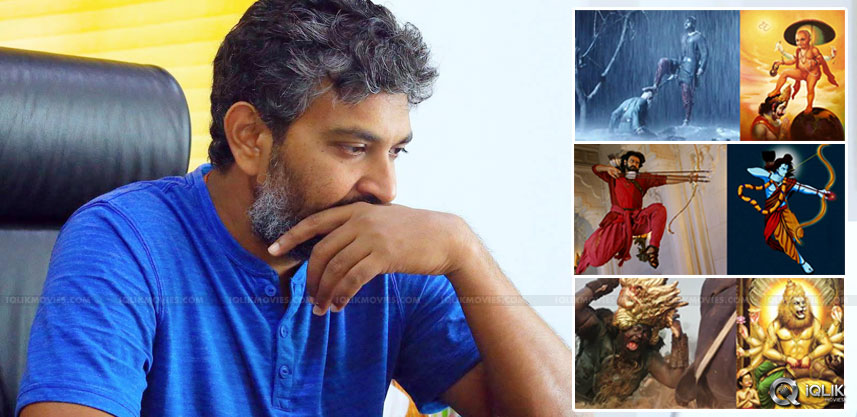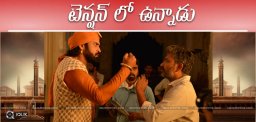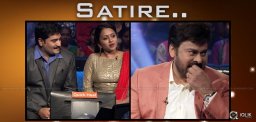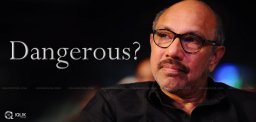Baahubali stands tall as an epic on Indian screen and there is no dispute in that. No other film is being discussed in such an astonishment and attention to detail in recent years.
My 8 year old daughter Mayukha, watching Baahubali-The Beginning on Television last night, observed something that triggered a thought process in me.
She said, "Baahubali landing his foot on Kattappa's head is like Vamana avatar". I smiled in delight for her observation.
After sometime, she also pointed that Baahubali holding Kalakeya's head with a lion faced glove is resembling Narasimha Avatar.
This time, I didn't smile but frowned in pensive mood. I rushed to youtube and tried to decode remaining avatars incorporated in Baahubali.
It's indeed a delight finding one by one, and shared all of them first with my daughter who pushed me into this sweet and pleasant research.
Matsya Avatar:
In Baahubali-The Beginning Avantika gets a tattoo done by Baahubali who swims underwater to do it. This reminds of Matsya avatar.

Kurma Avatar:
There is a scene where the slaves of Mahishmati kingdom are seen pulling up the rope to erect the giant statue of Bhallaladeva. This reminds us of the scene where the Devas and Asuras toil hard to churn the sea of milk with Mandara mountain. At that time, to give support Lord Vishnu comes as Kurma to accomplish the task. Just like that Baahubali comes and gives support to the slaves of Mahishmati by offering his muscle power to lift the statue.
Varaha Avatar:
Ancient Hindu scriptures state that Bhoodevi who was in the clutches of the demon king Hiranyaksh was brought out by Lord Vishnu who took the avatar of Varaha- the wild boar. Similarly, Baahubali also releases his mother Devasena from the clutches of the evil tyrant Bhallaladeva. Though the concerned image from Bahubali is not seen clearly here, it is Mahendra Baahubali lifting his mother Devasena on to his shoulder.
Narasimha Avatar:
A look at the below image gives you a clear link between the two. Amarendra Baahubali kills the evil warlord Kalakeya and in the depiction, director SS Rajamouli showed how the execution is done using something that looks like the Lion’s crown.

Vamana Avatar:
Just the image is sufficient to correlate with Vamana avatar. Akin to Vamana's foot on Bali, even Mahendra Baahubali is seen putting his foot on the head of Kattappa.

Parasuram Avatar:
Parasuram was known for his anger and at the same time his ferocity in battle. His weapon was the battle axe and here is a link to Baahubali. Just when the army of Kalakeya comes to attack Mahishmathi, Amarendra Baahubali draws a battle axe from his sleeve and this weapon is a symbolism of Parasuram.
Ram Avatar:
Mythology states that when Lord Ram raises his bow and shoots an arrow it is a delight to watch for his people and a dazzling nightmare to his enemies. That’s the precision and finesse of Lord Ram. When you see the trailer of Baahubali-The Conclusion the arrow shooting sequence tends to remind you of Lord Ram. In fact, Baahubali is seen using arrows in Kalakeya's battle as well.
Krishna Avatar:
A true symbolism needs to be found as nothing appeared deliberately. To take a close reference, in the song ‘Panchi boli/ Pachcha bottesina…’, a beautiful peacock tattoo is seen. We have to interpret this to the peacock feather always worn by Lord Krishna.
Kalki Avatar:
It is said that Kalki Avatar arrives riding on a horse and kills the evil forces mercilessly. The same can be seen here where Baahubali finishes the evil forces of Kalakeya.

As per Dasavatar theory, there is a version that states Lord Buddha as an avatar and another version states it was Lord Balarama. As such, the first part of Baahubali didn’t reveal any such thing but we have to see if something is in store in the second part.
As mentioned above, I don’t know whether Rajamouli has done this deliberately or is it just an act of coincidence. But still, it is needless to say that the influence of puranas and ithihasas are deep rooted in the thought process of the most revered Indian film director, SS Rajamouli.
- Sira Sri




















